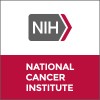
Molecular Guided Therapy for Refractory or Recurrent Neuroblastoma
NeuroblastomaThe purpose of this study is to test the feasibility (ability to be done) of an experimental test to help plan your cancer treatment. This study plan is not studying the effectiveness of the proposed combinations of therapy for your cancer that you may receive after the experimental testing. This study will look at an experimental technology to determine a tumor's molecular makeup (gene expression profile). This technology (called "OncInsights") is being used to discover new ways to understand cancers and potentially predict the best treatments for patients with cancer in the future. The experimental technology has not been approved by the U.S. Food and Drug Administration.

A Phase I Study of Pazopanib as a Single Agent for Children With Refractory Solid Tumors
SarcomaNeuroblastoma3 moreBackground: - Pazopanib, a drug that inhibits the growth of new blood vessels in tumors, was recently approved by the Food and Drug Administration to treat advanced kidney cancer in adults. Pazopanib has been used in only a small number of adults, and more research is needed on whether it is safe and effective to use in children. Researchers are interested in determining safe and effective treatment doses of pazopanib in children, and in other studies will examine which form of pazopanib treatment (tablet or liquid) is most effective and well tolerated. Objectives: To determine a safe and effective dose of pazopanib to treat solid tumors in children. To study the effects of pazopanib on blood cells, blood flow, and human development. Eligibility: - Children, adolescents, and young adults between 1 and 21 years of age who have been diagnosed with solid tumors that have not responded to treatment. Design: Eligible participants will be screened with a physical examination, blood and tumor samples, and imaging studies. Participants will receive pazopanib tablets for 28-day cycles of treatment. Pazopanib should be taken on an empty stomach, at least 1hour before or 2 hours after a meal. Participants may receive pazopanib for up to 24 cycles unless the tumor does not respond or participants develop serious side effects. Blood samples will be taken on days 1, 15, 22, and 27 of the first cycle of pazopanib, with additional samples taken every 8 weeks during subsequent cycles. An optional part of the study will collect additional blood samples at regular intervals for 24 hours after the first dose of pazopanib and at regular intervals after another dose during the second or third week of the first treatment cycle.

Safety of 68Ga-DOTA-tyr3-Octreotide PET in Diagnosis of Solid Tumors
Neuroendocrine TumorsCarcinoid Tumors2 moreThis protocol is designed to test the efficacy of 68Ga-DOTATOC PET/CT in diagnosis, staging, and measurement of response to treatment in patients with somatostatin receptor positive tumors. Goals are to 1) compare this unique PET/CT scan with the current standard of care which is a combination of Octreoscan SPECT (single photon emission tomography) plus a high resolution, contrast enhanced CT; 2) Determine the sensitivity of 68Ga-DOTATOC PET/CT in diagnosis of patients with suspected somatostatin receptor positive tumor; and 3) For those patients who have had recent treatment (e.g., surgery, chemotherapy, targeted therapy such as anti-angiogenics, kinase inhibitors, peptide receptor radiotherapy), this scan will be used to measure response to treatment. These studies will be obtained with the long term goal of submitting a New Drug Application (NDA) for FDA approval of 68Ga-DOTATOC PET/CT in adults and children.

Chemotherapy Followed by Peripheral Stem Cell Transplantation in Treating Children With Newly Diagnosed...
Brain and Central Nervous System TumorsNeuroblastoma2 moreRATIONALE: Drugs used in chemotherapy use different ways to stop tumor cells from dividing so they stop growing or die. Combining chemotherapy with peripheral stem cell transplantation may allow the doctor to give higher doses of chemotherapy drugs and kill more tumor cells. PURPOSE: Phase II trial to study the effectiveness of different regimens of combination chemotherapy followed by peripheral stem cell transplantation in treating children who have newly diagnosed brain tumor.

Allogeneic Hematopoietic Stem Cell Transplantation for Relapsed or Refractory High-Risk NBL.
NeuroblastomaRATIONALE: - Relapsed or refractory Neuroblastoma (NBL) carries a very poor prognosis and children with relapsed NBL have an overall 3 year survival rate of < 10%. Hematopoietic Stem Cell Transplant from a different donor (allogeneic), is a form of adoptive cellular therapy , such that infused donor cells find host tumors as foreign and fight them. After transplant, the donor immune cells (i.e. T cells, NK cells) mediate Graft versus Tumor (GVT) effect and may stop tumor from recurring. Also,reduced intensity transplants lead to minimal toxicity and less risk of mortality in heavily pre-treated NBL patients. PURPOSE: This phase II trial is studying how well giving a reduced intensity(using Fludarabine, Busulfan and antithymocyte globulin)preparative regimen followed by donor stem cell transplant works in treating young patients with high-risk neuroblastoma that has relapsed or not responded to treatment.

Efficacy and Safety of Ultratrace™ Iobenguane I 131 in Neuroblastoma
NeuroblastomaThis is a multi-center, single arm trial of two doses of 18 mCi/kg of Ultratrace iobenguane I 131 administered to subjects with high-risk neuroblastoma. Iobenguane I 131 is a drug that has already been used in many children to treat neuroblastoma, and it is known to shrink some of the tumors, and cause manageable side effects. When administered intravenously, Iobenguane I 131 accumulates in the neuroblastoma cancer cells and causes them to die. In this study the investigators are investigating the use of a new form of Iobenguane I 131 called Ultratrace iobenguane I 131. This form is expected to deliver higher amounts of radioactive I 131 to the neuroblastoma cells. The primary purpose of the study is to determine if Ultratrace iobenguane I 131 can be used to successfully treat high-risk neuroblastoma. The study will also assess the safety of Ultratrace iobenguane I 131 when given to patients with high-risk neuroblastoma.

3RD GENERATION GD2 SPECIFIC CHIMERIC ANTIGEN RECEPTOR TRANSDUCED AUTOLOGOUS NATURAL KILLER T-CELLS...
NeuroblastomaThis research study is for patients that have a cancer called Neuroblastoma that has either come back after treatment or did not respond to the standard medicines used to treat it. This study combines two different ways of fighting cancer: antibodies and Natural Killer T cells. Antibodies are types of proteins that protect the body from infectious diseases and possibly cancer. T cells, also called T lymphocytes, are special infection-fighting blood cells that can kill other cells, including cells infected with viruses and tumor cells. Both antibodies and T cells have been used to treat patients with cancers. The investigators have found from previous research that they can put a new gene into T cells that will make them recognize cancer cells and kill them. In a previous clinical trial, the investigators made a gene called a chimeric antigen receptor (CAR), from an antibody called 14g2a that recognizes GD2, a molecule found on almost all neuroblastoma cells (GD2-CAR). They put this gene into the patients' own T cells and gave them back to patients that had neuroblastoma. Nineteen patients were treated on that study and there were no long term side-effects seen after the GD2 T cell infusion. As the investigators have followed the patients over time, they noticed that for those patients with disease at the time of their infusion, the time to progression (the amount of time it takes before their neuroblastoma got worse) was longer in those whom they could find GD2 T cells in the blood for more than 6 weeks after the last T cell infusion. Because of this, the investigators think that if effector cells are able to last longer, they may have a better chance of killing neuroblastoma tumor cells. Natural Killer T cells are a special subset of innate lymphocytes that can effectively go into tumor tissues of neuroblastoma. Inside the tumor, there are certain white blood cells which help the cancer cells to grow and recover from injury. Natural Killer T-cells can specifically kill these cells. In this study, Natural Killer T cells will be genetically engineered to express GD2-CAR to attack neuroblastoma cells and the white blood cells inside the tumor tissue.

Standardized Protocol of Surgery and Radiation for Patients With Brain Metastases in Relapsed Neuroblastoma...
Relapsed NeuroblastomaHITC001 is a single institution study to evaluate the efficacy of using a standardized protocol of surgery and radiation for patients with brain metastases in relapsed neuroblastoma.

New Castle Disease Virus (NDV) in Glioblastoma Multiforme (GBM), Sarcoma and Neuroblastoma
GlioblastomaSarcoma1 morePatients with specific metastatic cancers who failed prior therapeutic regimes will be treated with NDV for at least a year or until disease progression. The study will measure progression-free disease and posits that it will be extended.

Efficacy of Prophylactic Itraconazole in High-Dose Chemotherapy and Autologous Hematopoietic Stem...
NeuroblastomaBrain Tumor3 moreThe purpose of this study is to investigate whether the prophylactic use of itraconazole is a better option than empirical use of itraconazole in the management (prevention and treatment) of fungal infection associated with high-dose chemotherapy and autologous hematopoietic stem cell transplantation in children with high-risk solid tumor.
